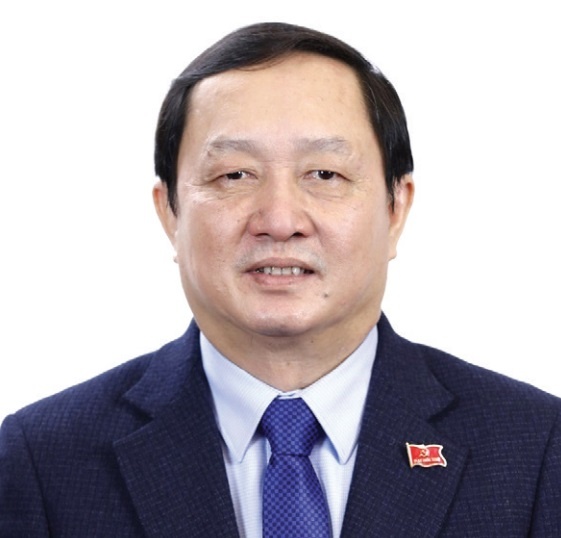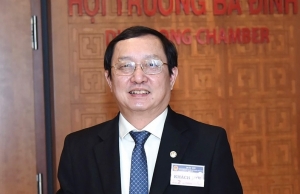A helping hand for tech through amended IP law
The Law on Intellectual Property (IP) has had a complicated journey when it comes to lining up with Vietnam’s international commitments. What have been the biggest concerns while crafting amendments of the law?
 |
| Huynh Thanh Dat, Minister of Science and Technology |
Issued in 2005 and then amended in 2009 and 2019, this law plays a big role in adjusting legal relations for the special assets of intellectual property rights (IPR).
However, the practical enforcement, together with the country’s deeply increasingly global integration, shows problems and barriers in the law.
Therefore, this amendment is an urgent need for Vietnam’s socioeconomic development with an aim to create a strong motivation for research and development (R&D), and innovation, and to ensure an adequate and efficient legal framework for the protection and development of IPRs.
This is also reflected in the policies of the Party and the state about the completion of the socialist-oriented market economy, as well as industrialisation and modernisation to actively participate in the Fourth Industrial Revolution, and rapid and sustainable development based mainly on science, technology, innovation, and digital transformation.
This amendment covers a wide scope, with more than 100 articles revised and supplemented. The law attracted attention and comments from National Assembly deputies about many contents, with those related to granting patent registration rights, industrial design, and layout design of the most interest.
These contents are amended towards making them clearer and more detailed to make research results become assets protected by IPRs, thus facilitating them in their commercialisation in the market.
What are the most important policies and changes in the amended law that are expected to create breakthroughs for enterprises and people?
The new law covers the supplement and amendment of 102 articles while amending and supplementing some regulations in the Law on Prices, the Law on Customs, the Law on Science and Technology, and the Law on Management and Use of Public Assets to ensure consistency and synchronousness the legal system.
The amendment focuses on seven key policies. In the first policy, the regulations on authors, copyright owners, and related rights holders in cases of transferring the right to use copyright and related rights are clearly regulated.
The second policy encourages the creation and use of patents. The law supplements the regulations to ensure the state management ensures efficient use and development, and balances the interest between owners of protection certificates and the state as the investor and social benefits.
The third policy creates favourable conditions for the completion of the copyright registration procedure and procedures for establishing industrial property rights.
In the fourth policy, the law ensures adequate protection and balance in IPR protection. The amended regulations are related to the fields of copyright, related rights, industrial property rights, and more, including the supplementation of some exceptional cases without infringement of copyright.
In the fifth policy, some regulations are amended to increase supporting activities for the IP system. Some are amended in a more open direction to create healthy competition in the supply of services.
In the sixth policy, the law will increase the efficiency of activities to protect IPRs. Notably, it has the regulation to add competence of applying measures of control at border areas if customs agencies during their supervision and check find clear grounds that import and export goods are counterfeit intellectual property.
In the seventh policy, the law ensures full and strict enforcement of Vietnam’s international commitments to IPR protection.
What are the challenges and advantages in the upcoming enforcement of the amended law?
The amended law will take effect from January 1, 2023. There is huge scope of work ahead. Decrees and circulars guiding the implementation of the law are being worked on, amended and supplemented to ensure their application.
I believe that the enforcement of the law will be effective and favourable. Moreover, regulations in the law are amended towards creating favourable conditions for organisations and individuals in the protection of IPRs, boosting R&D activities and innovation, and application of IP assets in Vietnam.
The Ministry of Science and Technology (MoST) will work with relevant agencies in popularising and guiding the implementation of the law, while building and then submitting guiding documents to authorised agencies for approval on schedule.
The MoST expects that the amended law will create more positive changes, contributing to creating strong motivation to encourage organisations, and individuals to invest in R&D activities, technology transfer, and commercialisation of IPRs, thus attracting more financial resources for them in particular, and for Vietnam’s socioeconomic development in general.
 | Lessons to learn regarding intellectual property issues According to the ranking of the 100 most valuable brands globally published in 2020 by UK-based brand ranking and consulting company Interbrand, the United States was the country with the most intellectual property assets. Specifically, in the top five most valuable brand names in the world, there are four American brands in the technology sector. Although it was reported last year that Apple is now worth over $2 trillion in market value, its brand value is estimated to be around $322 billion, which is nearly equivalent to Vietnam’s 2019 GDP. |
 | Taking advantage of IP enforcement The Law on Intellectual Property was issued in 2005 and has since helped regulate legal relations related to intellectual property (IP). However, a lot has changed since 2005. Vietnam is not purely a user of IP, but has transformed into a nation of creating IP assets to serve a deeper growth model. |
 | Conforming to treaty via Law on IP In the last few years, Vietnam has signed a certain number of international trade agreements which require Vietnam to accede to or approve the WIPO Copyright Treaty (WCT) within a prescribed time period. Partner Nguyen Thi Hong Anh and junior associate Vu Hoang Ha Thu of Indochine Counsel take a look at amendments and supplements made in the Law on Intellectual Property in June. |
What the stars mean:
★ Poor ★ ★ Promising ★★★ Good ★★★★ Very good ★★★★★ Exceptional
Themes: Digital Transformation
Related Contents
Latest News
More News
- Pivotal stage of growth paves way for rise in M&As (December 03, 2025 | 10:00)
- Positive projections for M&A interest from Thailand (December 03, 2025 | 09:40)
- Manifesting the first line of defence in cybersecurity (December 03, 2025 | 09:00)
- The transformational role AI can play in accounting arena (December 03, 2025 | 08:00)
- Unlocking 5G-AI potential in Singapore (December 03, 2025 | 08:00)
- Data-driven strategies vital for a fast-evolving nation (December 02, 2025 | 09:41)
- Policy to practice: how Vietnam can lead the region (November 26, 2025 | 16:03)
- Mobilising private capital at scale vital for climate battle (November 26, 2025 | 15:36)
- VILAF and Yoon & Yang launch Vietnam - Korea Practice Unit (November 26, 2025 | 15:16)
- Trademark disputes challenge foreign firms in Vietnam (November 24, 2025 | 15:30)

 Tag:
Tag:






















 Mobile Version
Mobile Version